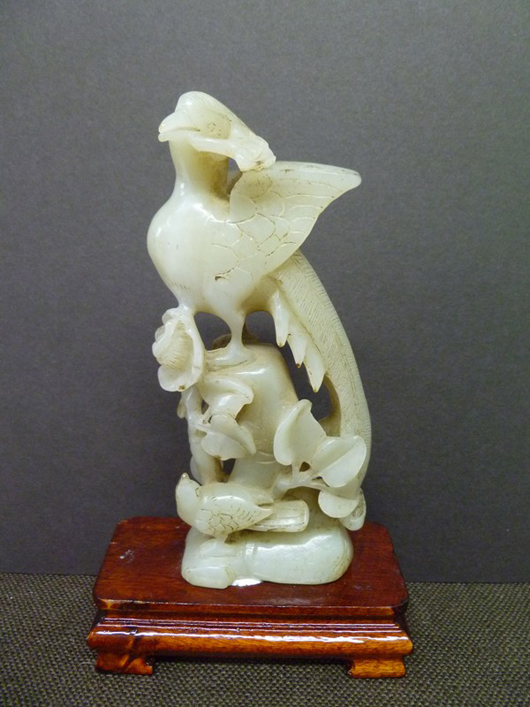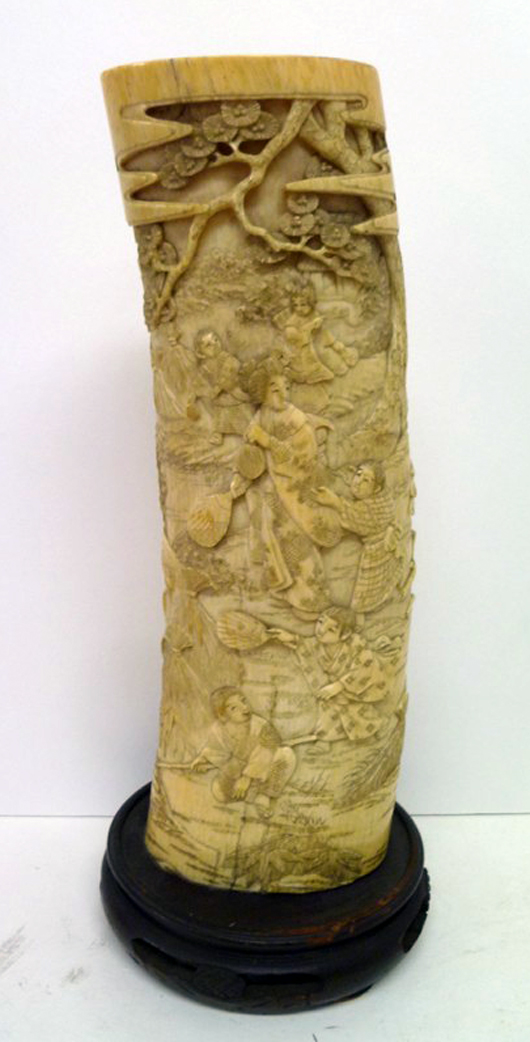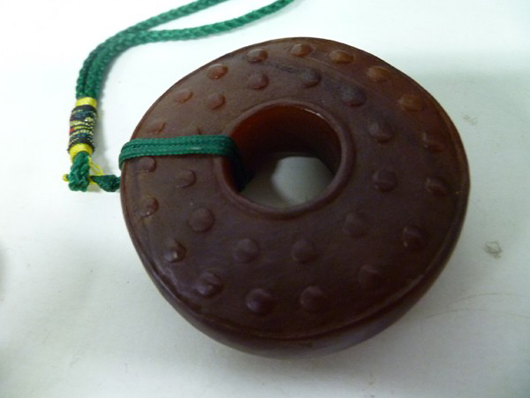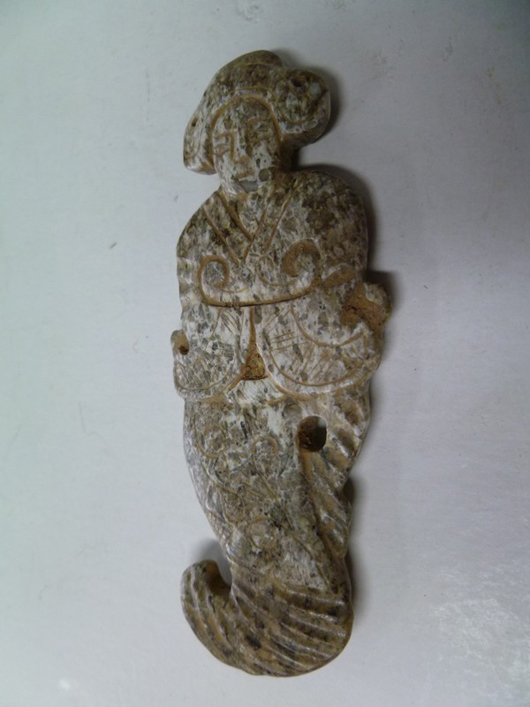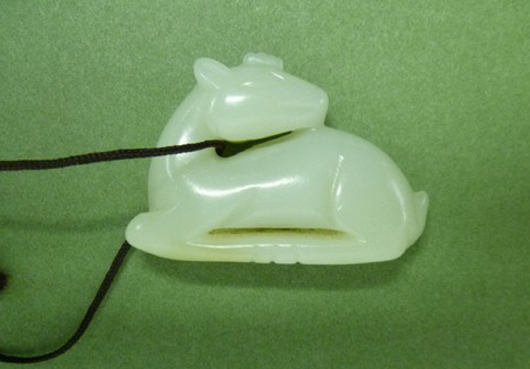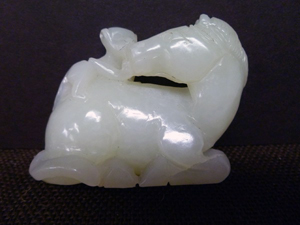
HADLEY, Mass. – It is every consignor’s dream – an inherited antique that turns out to be something very special when appraised by the auction company to which they have consigned a collection. This is the case with Chinese white jade carving that will be offered on June 26 in an online auction conducted by The Asian Antiques & Art Gallery of Hadley, Mass., through LiveAuctioneers.com. The auction company has confirmed that its featured piece quite likely was carved at the Imperial Workshops in the Forbidden City of Beijing. Described as a Xinjiang/Hetian nephrite jade carving of a monkey climbing on the back of a horse, the carving dates to the 1760-1796 era.
The Chinese Emperor Qianlong had long been fascinated by the hard and lustrous jade that was being brought in from the farthest reaches of his domain – the region then known as Chinese Turkestan. This material, found in the Khotan (now Hetian) River, had been known since ancient times but was difficult to transport to the Eastern jade carving centers. Brought by caravan, that journey took approximately six months. Transporters frequently encountered banditry, revolutions, sickness and starvation while passing through the dry and desolate Taklamakan desert (whose very name means, “If you go in, you will not come out”).
Having Imperial power and resources at his command, Emperor Qianlong sent geologists to find the origin of his precious Turkestani nephrite white jade. They traced the river back to its beginnings in the Kunlun Mountain range, and for the first time ever, were able to chisel and burn out chunks of white and greenish nephrite from that source.
Though beautiful in its own right, that foothill jade thereafter became known as “mountain nephrite,” a lesser cousin to the white “river” jade. The important carving consigned to the Asian Antiques online auction is from an original river stone, as evidenced by part of the colorful 18th-century jade “skin” left on an edge portion of the specimen. Such skin does not appear on examples carved of mountain jade.
Carvings from the Imperial Palace workshops are not always easy to distinguish from those made in the best commercial studios, which were positioned close to the Forbidden City to take advantage of commissions from the aristocracy that lived or visited there. Only through long association with quality jades from the older periods can one learn the differences. In this case, the identification is determined by: a) the type of flawless material, b) the use of a river jade and not the commoner mountain jade, c) the style or design of the figures, and d) the way the carving has been finished and polished clearly can be seen to be different from all other old jades. To be comfortable with an Imperial workshop attribution, all of these attributes must be present to confirm authenticity or origin.
Jades of this type often were gifts from the emperor to his favored male children conceived by the 50-odd concubines who lived on the Palace grounds. Those sons became the governors and military leaders of the empire when grown, thus ensuring faithful leadership to control the far-flung empire of feudal China. The interpreted meaning of a Monkey Climbing the Back of a Horse is to wish successful completion and a high score to a 20-something student in the arduous civil service exams that all had to take for service in the empire. Favored imperial sons were not exempt from this.
Robert Henry Cornell of Asian Antiques and Art Gallery began collecting jade in 1968 with the help of a mentor named Donald Cann. Starting his trips to Asia and China in 1980, he has been able to examine thousands of authentic examples over time – an advantage few could duplicate today. His expertise enables him to identify and value Chinese jade with great accuracy.
The starting price on the appraised Imperial workshop jade carving is $12,000, with a conservative estimate of $18,000-$30,000. Also offered in the Sunday online auction are tribal silver ornaments from Southwest China, superb carved ivory snuff bottles and netsukes from Japan (created between the wars), several Chinese-region rugs, and amuletic carvings and bronze ornaments of dynastic China.
The online-only auction begins at 7PM Eastern time, and all lots will have a starting price but no hidden reserves. All of the profits will go toward a building fund for the charitable World Peace Foundation of Hadley, Massachusetts. For additional information on any item in the auction, call 413-582-0032.
View the fully illustrated catalog and sign up to bid absentee or live via the Internet at www.LiveAuctioneers.com.
# # #
ADDITIONAL LOTS OF NOTE
